The origins of Mario, Luigi, Donkey Kong, Koopa, Toad, and the rest of the Mario characters’ names.
Super Mario Bros. for old school Nintendo was released on September 13, 1985… or exactly 37 years ago today.
When I found that out I did two things. First, I whipped out my copy (yes, I keep it that real/nerdy that I still have an old NES hooked up in my room) and made sure I can still beat the game at will. (I can. Childhood not wasted.)
Secondly, I started down a rabbit hole of reading Mario websites and Wikis and articles. In the process, I stumbled upon obscure Super Mario trivia facts as well as the etymologies of the names of several of the major players in the Mario universe.
The origins of super mario characters’ names
So, in honor of the video game that changed the world, here they are, presented in handy 11-item list form.
1 | Mario

When Mario debuted in the arcade game Donkey Kong, he was just called Jumpman. (Which also happens to be the generic name associated with that Michael Jordan spread leg Nike logo. Two of the most legendary icons ever both have generic versions of themselves called Jumpman.
But only one of them has now reached a point of being so powerful that he shaved himself a Hitler mustache before filming a commercial and no one had the balls to correct him.)
In 1980, as the Nintendo of America team imported Jumpman to elevate him into a franchise-leading star (Hayden Christensen style), someone noticed that he looked like their Seattle office building’s landlord… a guy named Mario Segale.
Mario Segale didn’t get a dime for being the namesake of the most famous video game character ever, but he probably isn’t too concerned; in 1998 he sold his asphalt business for more than $60 million. (Or 600,000 extra lives.)
2 | Luigi
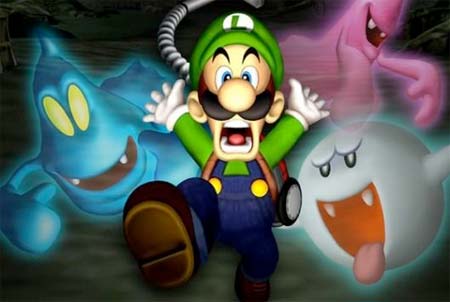
Luigi actually has one of the weakest name origins of all the characters in the Mario universe (once again showing why, in real life, he’d have a bigger inferiority complex than Frank Stallone, Abel or that third Manning brother).
“Luigi” is simply the result of a team of Japanese guys trying to think of an Italian name to complement “Mario.” Why was that the Italian name they went with? When they all moved from Japan to Seattle, the pizza place closest to the Nintendo headquarters called Mario & Luigi’s. (It has since gone out of business.)
3 | Koopa
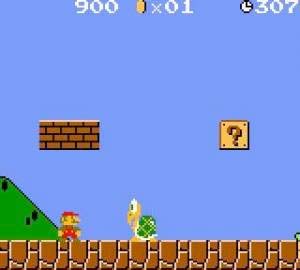
Koopa is a transliterated version of the Japanese name for the enemy turtles, “Kuppa.” Stick with me here — kuppa is the Japanese word for a Korean dish called gukbap. Basically it’s a cup of soup with rice. From what I can tell it’s completely unrelated to turtles, especially malicious ones.
In an interview, Mario’s creator, Shigeru Miyamoto, said he was deciding between three different names for the race of evil turtles, all of which were named after Korean foods. (The other two were yukhoe and bibimbap.) Which means one of two things: (1) Miyamoto loves Korean food and wanted to give it a tribute or (2) Miyamoto thinks Koreans are evil and should be jumped on.
4 | Wario
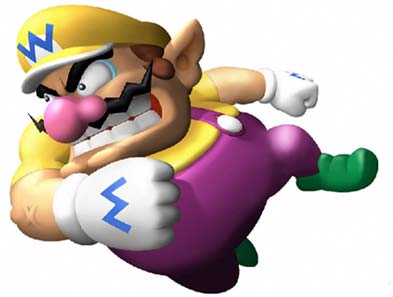
I kind of missed the debut of Wario — he debuted in 1992, right around when I was hitting the age where I was too cool for cartoon-y Nintendo games. (Me and my middle school buddies were into Genesis only. I was back on Nintendo within four years.)
Turns out his name works both in English and Japanese; I kinda assumed the English way but didn’t know about the Japanese aspect. In English, he’s an evil, bizarro world mirror image of Mario. The “M” flips to become a “W” and Wario is born. The name also works in Japanese, where it’s a combination of Mario and “warui,” which means “bad.”
That’s a pretty good situation, since, as I covered extensively in the list 11 Worst Japanese-To-English Translations In Nintendo History, not every language difference finesses back and forth so smoothly.
5 | Waluigi
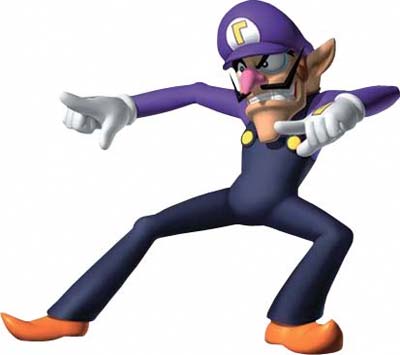
When I first heard “Waluigi” I thought it was hilarious. While Wario was a natural counterbalance to Mario, Waluigi felt so comically shoehorned (just tacking the “wa” prefix before Luigi) — like a giant inside joke that somehow cleared every bureaucratic step and cracked the mainstream.
Well… according to the Nintendo people, Waluigi isn’t just a gloriously lazy choice or an inside joke gone huge. They *say* it’s based on the Japanese word ijiwaru, which means “bad guy.”
I don’t know. I feel like we’d have to meet them more than halfway to buy that.
6 | Toad

Toad is made to look like a mushroom (or toadstool) thanks to his giant mushroom hat. It’s a good thing these games debuted before the entire generation knew how to make penis jokes.
Anyway, in Japan, he’s named Kinopio, which is a mixture of the word for mushroom (“kinoko”) and the Japanese version of Pinocchio (“pinokio”). Those blend to be something along the lines of “A Real Mushroom Boy.”
7 | Goomba
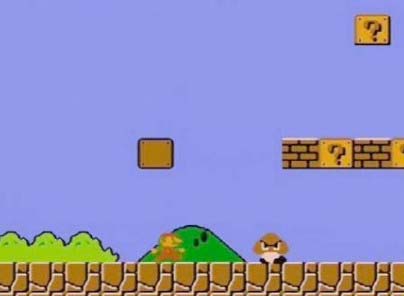
In Japanese, these guys are called kuribo, which translates to “chestnut people.” That makes sense because, ya know, if someone asked you “what do chestnut people look like?” you’d probably arrive at something roughly similar to these characters.
When they were imported for the American version, the team stuck with their Italian initiative and called them Goombas… based off the Italian “goombah,” which colloquially means something like “my fellow Italian friend.” It also kind of evokes the picture of low-level mafia thugs without too many skills — like people’s younger brothers and cousins who they had to hire or mom would yell at them. Which also applies to the Mario Bros. goombas.
8 | Birdo
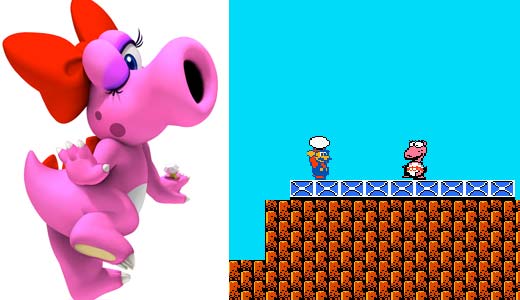
Birdo has nothing to do with this character’s original Japanese name. There, he’s named Kyasarin, which translates to “Catherine.”
In the instruction manual for Super Mario Bros. 2, where Birdo debuted, his character description reads: “Birdo thinks he is a girl and likes to be called Birdetta.”
What I think this all means? Nintendo shockingly decided to create a character who struggles with his gender identity and named him Catherine. When it was time to come to America, they got cold feet so they decided at the last minute to call him Birdo, even though he’s a dinosaur. (And don’t give me the “birds are descended from dinosaurs” pop-paleontology line. Not buying that connection.) That way, we’d only know about his gender situation if we read the manual, and the Japanese were pretty sure Americans were either too lazy or illiterate to do so en masse.
9 | Princess Toadstool/ Peach

When we all got introduced to the Princess, she was known as Princess Toadstool. I guess this made sense — Mario was set in the Mushroom Kingdom, so why wouldn’t its monarch be named Princess Toadstool. Them inbreeding blue bloods are always naming their kids after the country.
No one seems to be sure why they went that direction, though. In Japan, she was known as Princess Peach from day one. That name didn’t debut here until 1993, when Yoshi’s Safari came out for Super Nintendo. (By the way — have you ever played Yoshi’s Safari? In a bizarre twist it’s a first-person shooter, the only one in the entire Mario history. It’s like the equivalent of a country music superstar putting out a weird rock album.)
10 | Bowser

In Japan, there is no Bowser. He’s simply called the King Koopa (or similar variations, like Great Demon King Koopa). So where did Bowser come from?
During the import process, there was a concern that the American crowd wouldn’t understand how the little turtles and big bad guy could both be called Koopa. So a marketing team put together dozens of choices for a name, they liked Bowser the best and slapped it on him.
In Japan, he’s still rarely called Bowser. Over here, his name has become so ubiquitous that he’s even supplanted Sha Na Na’s Bowzer as America’s most famous Bowser.
11 | Donkey Kong
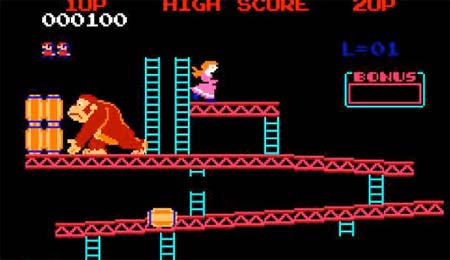
This is a much more literal interpretation than you think. “Kong” is based off King Kong. “Donkey” is a family-friendly way of calling him an ass. That’s right: His name is a marketable version of “Ass Ape.”